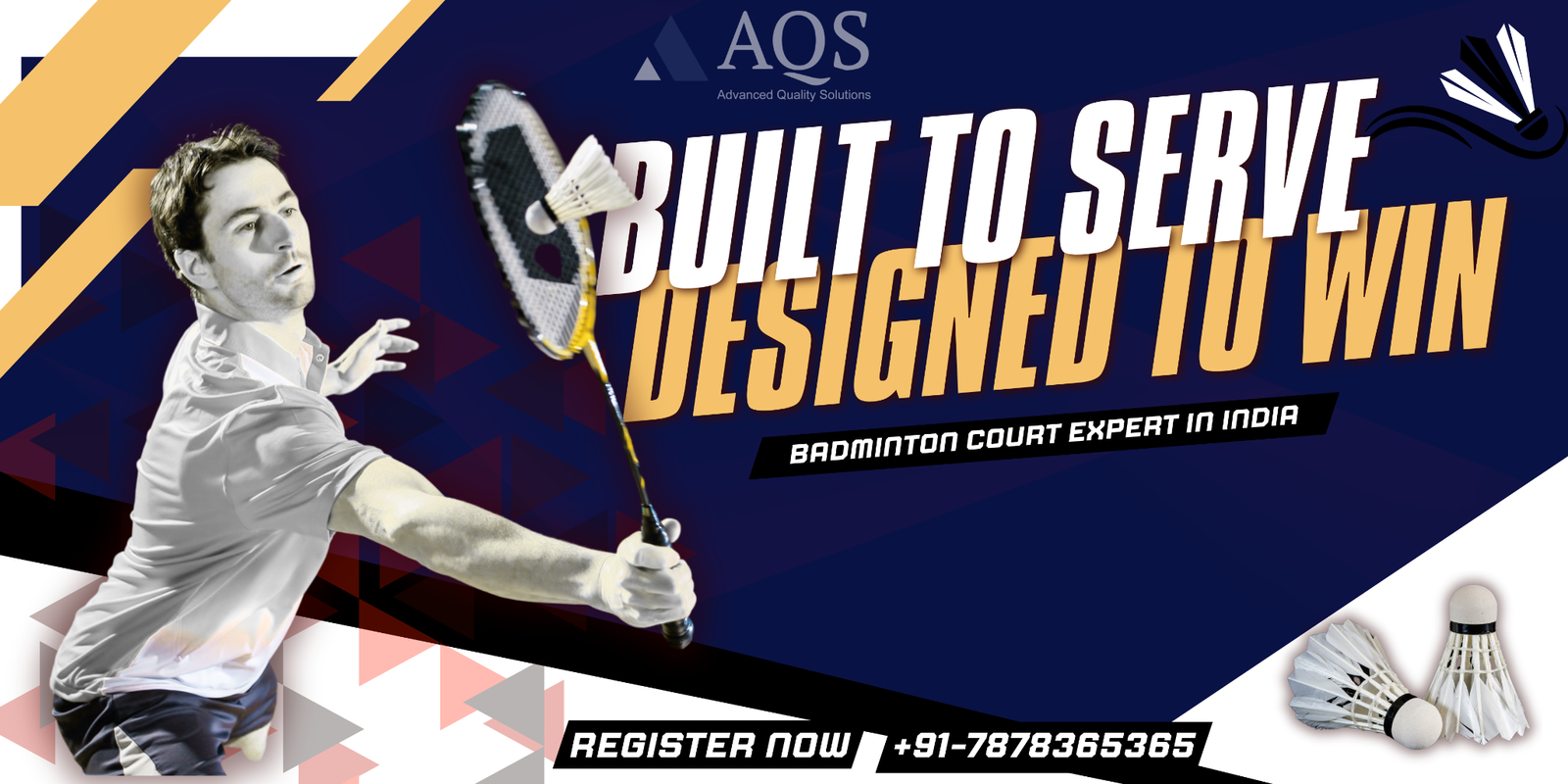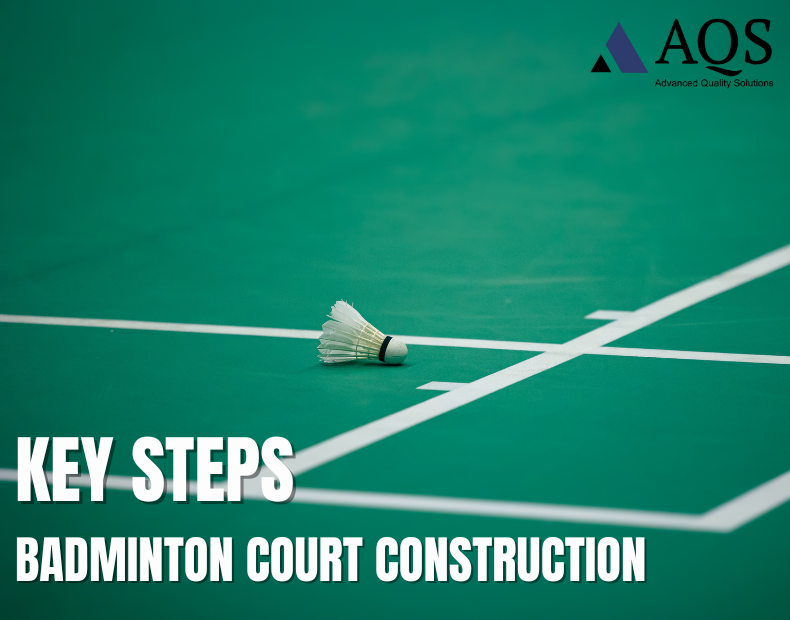
Badminton is a big part of India’s sporting landscape, with players from schools, residential societies, professional academies and recreational clubs. As the sport grows, so does the demand for well-built, high-quality badminton courts that support performance and player safety. From casual play to competitive training, a well-built court ensures consistent bounce, grip and durability across all levels of use. To meet this demand, badminton court construction service in India now offer solutions for both indoor and outdoor courts.
This includes various flooring options, advanced materials and precise installation techniques. Whether you are building a new court or upgrading an existing one, understanding the construction process, material choices, cost factors and maintenance needs is crucial. This guide covers everything you need to know for badminton court construction in India.
Types of Badminton Courts
Choosing the right court type is the first step in construction. The choice of court type depends on usage, location and budget. Each has its own features suited to specific needs.
1. Indoor vs Outdoor Courts
Indoor Courts are preferred for professional training academies, sports complexes and competitions. These courts provide a controlled environment that protects the flooring from weather damage and ensures consistent performance year-round. Lighting, ventilation and climate control are key components of indoor setups.
Outdoor badminton Courts are commonly seen in schools, community parks and residential societies. They are more budget-friendly but require durable, weather-resistant materials to withstand UV rays, rainfall and dust.
2. Synthetic Acrylic Flooring
Synthetic acrylic flooring is one of the most popular options for both indoor and outdoor badminton courts which is preferd by expert badminton court construction service provider like AQS. It is UV resistant, highly durable and has excellent surface traction. The flooring is easy to maintain and suitable for frequency use. It’s also versatile and can be used for multi-sport courts.
3. Wooden Flooring (Indoor Use)
Wooden flooring is preferred for indoor courts where professional play is the focus. It provides superior shock absorption, natural bounce and foot comfort. But it must be installed in humidity-controlled environments to prevent damage over time.
4. PU & PVC Flooring
PU (Polyurethane) and PVC (Polyvinyl Chloride) floors are used for indoor recreational courts. These floors have a soft, cushioned surface ideal for school gyms, fitness centers and beginner-level play.
Standard Badminton Court Dimensions and Markings
Construction of badminton courts must be in accordance with international specifications provided by the Badminton World Federation (BWF) to maintain fair play at every level. Adhering to these dimensions and markings is important in ensuring tournament eligibility as well as professional training.
The doubles badminton court is 13.4m in length and 6.1m in width. In the case of singles, it’s 13.4m in length and 5.18m in width. The net is 1.55m high at the posts and 1.524m in the center, with a slight dip in the center to sustain fast rallies.
Major service line measurements include the short service line 1.98m from the net and the doubles long service line 0.76m from the back boundary line. The center line splits the service court into two to mark the service areas. Courts should be well marked with hard-wearing acrylic paint or synthetic coatings for precision and visibility.
Key Steps in Badminton Court Construction

Professional badminton court construction service provider will follows a structured process to ensure long-term durability, playability and international standards. Each stage is crucial to a safe and high-performance court surface.
1. Site Inspection and Layout Planning
The process starts with a site evaluation to assess the area, surface and drainage, and then the lighting. Based on these, a custom design is created, whether the court is indoor or outdoor.
2. Base Construction
For outdoor courts a cement or concrete base is laid with a slight slope to allow water drainage and prevent surface damage. For indoor courts, the base may be a wooden subfloor or level concrete surface, depending on the flooring type.
3. Surface Material Application
Once the base is ready, the selected flooring—synthetic acrylic, wooden planks or PU/PVC sheets—is applied. Proper bonding and leveling is important for a smooth and even surface.
4. Line Marking and Finishing Touches
Courts are then marked according to BWF regulations and then a topcoat is applied for anti-skid and anti-glare properties for safety and play.
Essential Materials Used
Using high-quality materials is key to a badminton court’s safety, performance and longevity. The right combination of surface systems and coatings makes for great play and minimal injury risk.
- Synthetic acrylic layers are used in both indoor and outdoor courts. This multilayered system includes a concrete primer, acrylic resurfacer, cushion coat layers and topcoat. All these layers give you a balance of grip, shock absorption and durability.
- For indoor courts, wooden flooring systems are the preferred choice. These use high-grade hardwood planks installed over a shock-absorbing base. This gives you great bounce, comfort and impact protection for competitive play.
- Shock-absorbing underlays can be added under most flooring types to reduce joint strain and increase player comfort, especially during long play.
- Finally anti-skid and anti-glare topcoats are applied to improve traction and visibility. These coatings are crucial in preventing slips and maintaining a professional look over time.
Cost of Badminton Court Construction in India
The price of a badminton court in India varies based on numerous factors. One of the most important factors is whether it’s an outdoor or an indoor one because indoor demands added structural support, climate control and lighting.
The material used for flooring is also a huge consideration. Synthetic acrylic, wooden flooring or PU/PVC have varying prices according to their performance as well as durability.
Other cost elements are labor, transportation and installation fees, which can be region-specific. Other customizations, such as lighting systems, seating plans, fencing and court covers, can also alter the cost.
Approximate Cost Ranges:
- Synthetic Acrylic Outdoor Court: ₹3.5 – ₹5.5 lakhs
- Indoor Wooden Court: ₹8 – ₹12 lakhs
- PU/PVC Flooring Court: ₹6 – ₹9 lakhs
Select the right sport flooring material and professional installation services for long-term value and expert performance.
Maintenance & After-Service Support
Regular maintenance is the key to a badminton court’s performance, safety and longevity. Here’s why:
- Lifespan: Stops wear and tear and surface damage.
- Safety: Reduces slips, trips and injury risk.
- Playability: Keeps grip, bounce and visibility.
Critical Maintenance Tasks
- Recoating Acrylic Courts: Reapply top coat every 4-6 years to keep traction and durability.
- Daily Cleaning: Sweep and wash daily to clean dust, debris and stains—especially outdoor courts.
- Resurfacing Wooden Courts: Sand and refinish worn or damaged areas to keep bounce and comfort.
- Surface Repairs: Fix cracks, peeling or dents before they get worse.
Professional After-Service Options:
- Maintenance Contracts: Regular cleaning, inspections and minor repairs.
- Inspections: Catch problems early.
- Recoating & Repair Services: Get the court looking and playing like new again.
Proper maintenance means a safer, long-lasting court.
Choosing the Right Construction Company
Choosing the right badminton court construction company is key to getting professional results that are durable, safe, and built to spec. The right contractor will not only know the technical side of court construction but will also deliver on time and on budget.
- Experience: Look for companies with a strong portfolio and proven track record of building badminton court flooring for schools, clubs, or commercial facilities.
- Materials: Ensure they use certified, weatherproof, and long-lasting materials that meet performance standards for indoor and outdoor courts.
- Project Timelines: Check their ability to deliver on time by reviewing past project timelines and client feedback.
- Support Services: Look for companies that offer installation warranties, maintenance packages, and custom design solutions to suit site conditions or user needs.
A professional badminton court construction service provider will help you avoid costly mistakes and build the court for long-term performance and safety.
Why Choose Professional Badminton Court Construction Service
Working with professional badminton court builders gives you more than just installation. Experienced contractors will design and build to Badminton World Federation (BWF) standards for dimensions, layout and markings so you get uniform play for recreational and professional use.
Quality badminton court construction serivce means better performance with premium flooring and accurate leveling for grip, bounce, and consistency. High-grade, low-maintenance materials mean long-term savings, as the surface is durable and looks great with minimal upkeep.
Professional services also put player safety and comfort first by including anti-skid coatings, shock-absorbing layers, and weather-resistant finishes. These reduce the risk of injury and give a better playing experience.
Choosing an expert builder means you get a court that performs, lasts, and gives value—a smart decision for schools, clubs, and sports facilities.
Top Sports Flooring Solutions: Maximum Grip and Seamless Performance
| Tennis Court Flooring | Pickleball Court Flooring | Multi-Purpose Court Flooring |
| Basketball Court Flooring | Walking Track Flooring | Cycle Track Flooring |
Conclusion
Building a badminton court is an investment that requires planning, precision, and quality material. Every aspect—from choosing the right location and flooring to dimensions and surface finish—matters for the long-term performance and safety of the court. Whether it’s for a residential complex, educational institution, sports academy, or commercial complex, working with an experienced and professional construction company ensures the best results.
AQS is a trusted name in badminton court construction service in India. With a focus on durability, safety and international standards, AQS builds courts with premium material and skilled workmanship. For clients looking for reliable and efficient badminton court solutions, AQS has the perfect combination of expertise and quality.
Frequently Asked Questions
A standard badminton court measures 13.4 meters long and 6.1 meters wide for doubles, with 5.18 meters width used for singles play.
Badminton court construction costs range from ₹3.5 lakhs to ₹12 lakhs, depending on the flooring type, location, and whether it’s indoor or outdoor.
Synthetic acrylic is best for outdoor use, while wooden or PU flooring is ideal for indoor courts requiring better shock absorption and professional-level performance.
Depending on the type and location, it typically takes 2 to 4 weeks for complete construction, including curing and finishing.
Yes, routine cleaning, surface inspections, and recoating every few years are essential to maintain safety, traction, and long-lasting surface performance.


